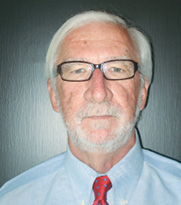In a survey conducted several years ago on how equipment dealers compensated their salespersonnel, it was revealed that 30% of the dealers paid their salespersonnel on the basis of salary while 28% of the dealers paid their sales force on the basis of “cash difference.” While salaried sales compensation was the basis of last month’s column, this column will explore the nuances associated with paying salespersonnel on the basis of the cash difference that is “drawn” on each transaction.
Although it is unclear why, how or by whom this system of compensation was first proposed, it can be speculated that because of its sheer inanity, the system was probably suggested by a manufacturer bureaucrat foisting the false promises of increased cash flow upon his undercapitalized and poorly trained dealers.
If there was ever a compensation system that could do less to generate positive cash flow, it could only be the subject of last month’s column. Cash difference compensation will not increase dealership cash flow. Instead, this feckless system will more than likely decrease cash flow, diminish equipment gross margins, and stimulate an increase in used equipment inventory. How equipment dealers are still utilizing such a system is more a product of their inability to change than it is to managing their dealership prudently and profitably.
Cash difference sales compensation is predicated on paying the salespesonnel a specified percentage of the cash that is drawn, or derived, on each transaction. Ostensibly, the more cash that is generated, the more the salesperson will earn. Generally, salespersonnel are paid 1-3% on the cash of a “new” transaction; and 2-4% on the cash derived from a used sale. In almost all cases where a cash difference compensation system is utilized, salespersonnel are also paid a salary: anywhere from $500 a month to $2,000 a month.
For example, let’s say that the salesperson is selling a new tractor with a list price of $168,000 with a suggested gross margin of 23%. The customer is trading in a used tractor that will be put on the books at $110,000 and will pay the dealership an additional $30,000 in cash. This transaction results in a net sale to the dealership of $140,000 with a realized gross margin of 7.6%. For their efforts, salespersonnel will earn $600 in commission provided they are paid 2% of the cash difference on a new transac- tion. Lest one forget, the salesperson is also paid a monthly salary.
Now, where the problem with the cash difference compensation becomes apparent is when the salesperson is encouraged to generate a little extra margin. Any good salesperson should be able to sell their product for at least 3% more than the competition. This value- added selling, however, assumes that the salesperson can sell (1) the dealership, i.e., the brand, the dealership’s financial stability and the dealership’s product support; (2) the product, i.e., the features, advantages and benefits; and (3) the salesperson themselves, i.e., his aggressiveness, integrity and follow-up.
If the perceived value is in place, then an additional 3% on average should not be too much to ask of a pro- fessional and successful salesperson.
Using the previous example, let’s say that the customer is looking at two comparably priced machines. Your salesperson is encouraged to go back to the customer and to sell enough value to generate an additional 3%. With the trade-in “fixed” at $110,000, the salesperson will have to generate an additional $4,200 in cash, thereby increasing the margin to 10.29% on a net sale of $144,200.
But here’s the question: “Based on being paid 2% of the cash difference, how many dealers and/or sales managers believe, I mean, truly believe, that they have a salesperson that will make an additional visit, or two, to generate an incremental $4,200 in cash, all for the whopping increase in their compensation of $84?” Order takers will tell you that they will. Field marketers would never be on this system. And this consultant will tell you that there are no order takers that will sell value, even if they had the wherewithal to do so, for the pittance that they would receive. Instead, their response will always be the original $30,000 cash difference is the most that the customer can pay. Why would any salesperson say anything else? The reality is that the order taker would be wiser, and smarter, to sell two units at the $140,000 selling price without much effort, thereby loading up the used equipment lot with even more units.
This is a perfect example of why dealers on this system of compensation are almost always prone to low margins, high inventory and lackadaisical order takers. This system of sales compensation should never be used.







Post a comment
Report Abusive Comment